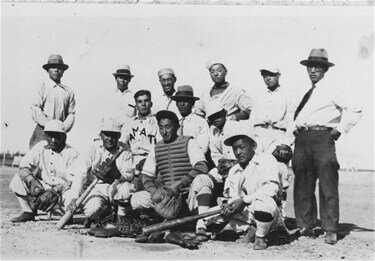Identity
Evacuee’s card carried by Japanese Canadians during the Second World War, ca. 1942-1945.
Galt Museum & Archives, P19790284038.
Lesson Objectives:
Students will reflect on how identity is shown.
Students will understand that names used within communities provide a way of understanding that community and its identity and that the language we choose to use is also part of our identity.
Students will understand that one of the cultural traditions passed down through the generations of some Japanese Canadian families is Buddhism or the Buddhist religion.
Alberta Curriculum Connections:
4.2 The Stories, Histories and Peoples of Alberta
4.2.1 Appreciate how an understanding of Alberta’s history, peoples, and stories contribute to their own sense of belonging & identity
Recognize how stories of people and events provide multiple perspectives on past and present events (Identity; Time, Continuity and Change)
4.2.2 Assess, critically, how the cultural and linguistic heritage and diversity of Alberta has evolved over time by exploring and reflecting upon the following questions and issues:
How did the arrival of diverse groups of people determine the establishment and continued growth of rural and urban communities? (Culture and Community; Global Connections; The Land: Places and People)
4.3 Alberta: Celebrations and Challenges
4.3.3 Examine, critically, Alberta’s changing cultural and social dynamics by exploring and reflecting upon the following questions and issues:
In what ways has Alberta changed demographically since 1905?
5.2 Histories and Stories of Ways of Life in Canada
5.2.1 Appreciate the complexity of identity in the Canadian context
Acknowledge the contributions made by diverse cultural groups to the evolution of Canada (Culture and Community; Identity; Time, Continuity and Change)
Recognize how changes in society can affect identity (Culture and Community; Identity)
5.3 Canada: Shaping an Identity
5.3.1 Appreciate how changes impact citizenship and identity
Recognize how economic and political changes impact ways of life of citizens (Citizenship; Economics and Resources; Identity; Power, Authority and Decision Making)
7.2 Following Confederation: Canadian Expansion
7.2.2 Recognize the positive and negative consequences of political decisions (Power, Authority and Decision Making)
Activities:
Who are you? Have each student draw a "sun" similar to the one below. Print your name in the middle of the circle. On each ray of the sun say something about yourself - how do you describe yourself? What are your favourite things? Where are you from?
Repeat the activity but in this case have the other students describe the student on the rays. Have each student compare how they see themselves (their identity) with how they are viewed by others.
Is it a match? There is often a difference between how we see ourselves and how we are seen by others.
Sometimes we are seen as an individual and sometimes we are seen as part of a group.
Individuals have identity but so too do groups. There is an identity about being "Canadian". What makes you a Canadian? Have each student create a collage or draw a picture of what they believe it means to be a Canadian.
Each of us also has identity coming from the other groups we belong to. We may have identity connected to a sport we play, to an instrument we know, to a language we speak, to a certain area of Canada, or to an ethnic/cultural group.
Japanese Canadians have an identity as Canadians. They also have an identity as a Japanese Canadian. How much of a person’s identity is based on their group? Is this the same for everyone? How do others see a group? Sometimes the way a group is viewed is based on stereotypes. Discuss with the class what stereotypes are.
Have the students view the photograph of the Japanese Canadian baseball team. Lead them through an activity of how to look closely at the photograph.
Describe what you see – how many people are in the photograph? How are they dressed? What sport are they dressed to play? How do you know? What is the same about all of the people in the photograph? What is different? Is it possible from the photograph to tell where or when this photograph was taken?
Why do you think the baseball team was comprised of only Japanese Canadian men and that the other teams in the league were also Japanese Canadians?
Following the Second World War, Japanese Canadians had to begin to reconstruct their lives. They had been moved, their goods sold, educations disrupted and they were uncertain about their place in Canada. For many people there may have been a sense of shame. Many Japanese Canadians responded with silence, with the idea of endurance. Some felt it was now better to not be TOO Japanese so many families adopted "Canadian" customs as much as possible outside of the home. In some cases, cultural traditions were not passed on.
One Japanese cultural belief is Shikata-ga-nai – "Accept it and move on"
If your family was moved from your home because of your cultural and ethnic background, which do you think would be easier: to stay close to people who have the same cultural background as you or to try to become as much like everyone else in the larger community? Why? Discuss as a class.


